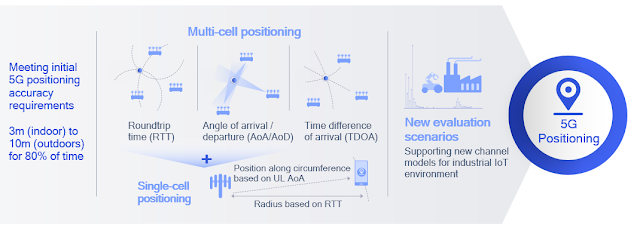Back in October, Huawei held
Better World Summit 2020 (a.k.a. "Win-Win Future" Global Online Summit). The theme of this online summit was "Power Digitalization 2025”. Experts and operators shared their ideas, vision and challenges. The following
summary was shared by Huawei:
Today, how should global operators respond to opportunities and challenges brought by changes in the digital world, under the rapid development of digital technology and digital economy.
“Energy, as the foundation of the digital world, has become a key part and an important point of competitiveness in the digital economy.” Zhou Taoyuan, President of Digital Power Product Line, Huawei, pointed out that “The entire industry needs to attach greater importance to energy”
With the rapid development of emerging technologies such as 5G, cloud, AI, big data, and the IoT, a digital transformation has kicked off, opening the digital age where things are sensing, connected, and intelligent, "ubiquitous Connected, omnipresent intelligence" is becoming a reality. This has thrown the development of 5G and big data centers into the spotlight. But at the same time, the large-scale and rapid construction of 5G and data centers have brought huge challenges to energy infrastructure, such as increasing energy consumption, long construction periods, and high operation and maintenance costs.
“Pay-as-you-go model is becoming more popular in many countries, as data center owners are looking to a decrease their investment and turn their Capex into Opex. And that goes also for a number of other services as part of running and maintaining data center.” Lilia Severina,Global Major Accounts Director of Uptime Institute,talked about the insights into data center trends at the meeting. “Existing site energy facility cannot meet the power demands of 5G sites. There is a pressing need for reform and innovation in this area.Digitization,intelligent and integrated 5G power system enable faster, more affordable, and simpler 5G network deployment.” Liu Baochang, Deputy Director of Information Energy Department, China Mobile Group Design Institute Co., Ltd, expressed his opinion on the development trend and insights of site power in the 5G era.
Violaine Petit, Sales and Marketing VP of CRT Informatique, shared an interesting case about building data centers of CRT in a castle.“CRT did not just want to build something regular. We wanted to be different. We also wanted to invest in a meaningful project. Based on our business development and rejuvenating the castle, CRT successfully deployed two data centers in the castle to meet the dynamic digital development requirements of government and enterprise users. It can be said that the castle data center not only expands CRT's business boundary, but also can protects the country's cultural heritage, can be said to be two birds with one stone.”
Today, people lead a convenient life because of development of science and technology, while they also worry about the environment. How do we transit towards a net-zero carbon economy? Alberto Carrillo Pineda, Director of Science Based Targets, CDP, has his own view. “This includes changes in policies, technologies, economic structures and patterns of production and consumption, but the most important thing is that we change the way we live today. One of the changes is energy transition. Transitioning from fossil-based to clean and renewable energy and phasing out CO2 emissions in other parts of our economy.”
Zhou Taoyuan said, “Huawei integrates traditional power technologies and digital technologies to achieve power digitalization. In this way, we can use ‘Bit to manage Watt’, and provide simple, green, smart, and reliable digital power solutions to solve challenges faced by traditional power industry. ”
Fang Liangzhou, the Chief Marketing Officer of Huawei Digital Power Product Line, Huawei, said“Huawei uses a target network architecture to guide the planning, construction, O&M, and operation of digital power infrastructure, driving the rapid development of the digital economy. Concerning site power, Huawei proposes implementing 5G without increasing site power-related OPEX, and aims to reduce costs from three aspects as well as tapping into new sources. As for data centers, Huawei proposes a simple, green, smart, and reliable next-generation data center facility that uses the "four reconstructions" initiative to tackle issues such as long data center construction period, high energy consumption, and challenging O&M.”
In the future, Huawei will keep cooperating with global operators to face the challenges and seize the opportunities brought by the digital world. Huawei aims to inject green power into operators and help them grow business sustainably in the future.
Surprisingly the only video I could find is on Periscope, embedded in the tweet above. You can jump on to the relevant sessions using the timestamps as follows
0:01:20 1. Opening Speech - Zhou Taoyuan, President of Digital Power Product Line, Huawei
0:07:14 2. Building a Net-zero Emissions Economy - Alberto Carrillo Pineda, Director of Science Based Targets, CDP
0:17:18 3. Trend and Insight of Site Power Facility in 5G era - Liu Baochang, Deputy Director of Information Energy Department, China Mobile Group Design Institute Co., Ltd
0:31:30 4. Perspective and Practice of Lithium Battery Application - José Pedro Nascimento, Network Director, Altice Portugal
0:40:10 5. Network Energy-Efficient Operation in EM Market - Li Yao, Deputy Director of NOC, China Mobile Pakistan
0:51:40 6. Trend and Insight of Data Center Facility - Lilia Severina, Global Major Accounts Director of Uptime Institute
1:10:30 7. Prefabricated Modular Data Center Case Sharing - Operator customers
1:16:20 8. Partnering To Power The Digital Datacenter - Violaine Petit, Sales and Marketing VP of CRT Informatique
1:25:10 9. New Era, New Power. PowerX 2025 Target Network - Dr. Fang Liangzhou, CMO of Digital Power Product Line, Huawei
Let me know what you think.



























